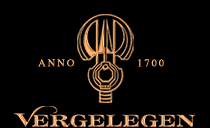
Cabernet Sauvignon is one of the world's most widely recognized red wine grape varieties. It is grown in nearly every major wine producing country among a diverse spectrum of climates from Australia and British Columbia, Canada to Lebanon's Beqaa Valley. Cabernet Sauvignon became internationally recognized through its prominence in Bordeaux wines, where it is often blended with Merlot and Cabernet Franc. From France and Spain, the grape spread across Europe and to the New World where it found new homes in places like California's Napa Valley, New Zealand's Hawke's Bay, South Africa's Stellenbosch region, Australia's Margaret River, McLaren Vale and Coonawarra regions, and Chile's Maipo Valley and Colchagua. For most of the 20th century, it was the world's most widely planted premium red-wine grape until it was surpassed by Merlot in the 1990s. However, by 2015, Cabernet Sauvignon had once again become the most widely planted wine grape, with a total of 341,000 hectares (3,410 km2) under vine worldwide.

Cabernet Franc is one of the major black grape varieties worldwide. It is principally grown for blending with Cabernet Sauvignon and Merlot in the Bordeaux style, but can also be vinified alone, as in the Loire's Chinon. In addition to being used in blends and produced as a varietal in Canada, the United States and Argentina, it is sometimes made into ice wine in those regions.

The Carménère grape is a wine grape variety originally planted in the Médoc region of Bordeaux, France, where it was used to produce deep red wines and occasionally used for blending purposes in the same manner as Petit Verdot.

Ruby Cabernet is a red Olmo grape variety that is a cross between Cabernet Sauvignon and Carignan. It can produce wines with good colour and a pleasant cherry flavour, but is mostly blended into bulk wines.

Stag's Leap Wine Cellars is a winery founded by Warren Winiarski in 1970 and based in the Stags Leap District of Napa Valley, California.

Ridge Vineyards is a California winery specializing in Cabernet Sauvignon, Zinfandel, and Chardonnay wines. Ridge produces wine at two winery locations in northern California. The original winery facilities are located at an elevation of 2,300 feet on Monte Bello Ridge in unincorporated Santa Clara County in the Santa Cruz Mountains AVA, south of Los Altos, California and west of Cupertino, California. The other Ridge winery facilities are at Lytton Springs in the Dry Creek Valley AVA of Sonoma County. Ridge Vineyard's 1971 Monte Bello Cabernet Sauvignon gained prominence for its fifth-place finish in the 1976 "Judgment of Paris" wine tasting.
South African wine has a history dating back to 1659 with the first bottle being produced in Cape Town by its founder and governor Jan van Riebeeck. Access to international markets led to new investment in the South African wine market. Production is concentrated around Cape Town and almost exclusively located within the Western Cape province, with major vineyard and production centres at Constantia, Paarl, Stellenbosch and Worcester.

The Pyrenees is a wine-producing region centred on the Pyrenees ranges located in Victoria, Australia near the town of Avoca.

Willem Adriaan van der Stel was an Extraordinary Councillor of the Dutch East Indies, and Governor of the Cape Colony, a way station for the Dutch East India Company (VOC), from 23 January 1699 to 1707. He was dismissed after a revolt and was exiled to the Netherlands.
Guijoso is a Vino de Pago from Spain. This is the highest category on the quality scale of Spanish wines and means that in addition to having a proven track record of consistent quality, the wines have to be both produced from estate-grown grapes and also have to be processed and aged in a winery (bodega) located on the estate.

Fairview Wine and Cheese farm is a South African producer of wines and cheeses based in the Paarl region of the Western Cape province. It is owned and run by Charles Back, who also owns The Goats do Roam Wine Company and The Spice Route Winery.

The early history of the South African wine industry can be traced to the founding of a supply station at the Cape of Good Hope by the Dutch East India Company. Jan van Riebeeck was given the task of managing the station and planting vineyards to produce wine and grapes in the Wijnberg ; that could be used to ward off scurvy for sailors continuing on their voyages along the spice route. In 1685, another Cape Governor, Simon van der Stel, purchased a large 750-hectare (1,900-acre) estate, founding what later became the world-renowned Constantia wine estate. In the 19th century, South Africa fell under British rule which proved lucrative for the wine industry as South African wine flowed into the British market. This prosperity lasted until the 1860s when the Cobden–Chevalier Treaty signed by the Palmerston government and France reduced the preferential tariffs that benefited South African wine in favor of French wine exports.

Champoux Vineyard is a grape growing estate located in the Horse Heaven Hills AVA of Washington state. Grapes grown in the vineyard have been used to produce some of the most critically acclaimed Washington wines with the name Champoux regularly being featured on vineyard designated wines. Paul Gregutt, wine writer for the Seattle Times and Wine Enthusiast, list Champoux as one of the "top ten" vineyards in the entire state. Cabernet Sauvignon grapes from Champoux vineyards were featured in the consecutive 100 point Robert Parker rated wines from Quilceda Creek Vintners for the 2002 and 2003 vintages.

Adelaida Vineyards & Winery is a family-owned and operated winery that was named after a 19th-century settlement in the mountains of west Paso Robles, California. Situated at 2,000 feet (610 m) of elevation and 14 miles (23 km) from the Pacific Ocean, the terrain of the Adelaida, California district is marked by ancient calcareous soils, diurnal temperature variations of nearly 50 °F (10 °C), and warm, dry growing seasons. Adelaida Vineyards & Winery produces Cabernet Sauvignon, Pinot noir, Syrah, Rhône blends, Zinfandel and other wines from the Paso Robles AVA.
Leeuwin Estate is an Australian winery and restaurant based in the Margaret River wine region of Western Australia.

Breaux Vineyards is a Cajun owned and operated winery and vineyard located in Purcellville, Loudoun County, Virginia. Founded by E. Paul Breaux, Jr. in 1997, the 100% estate grown winery was one of three United States wineries to be named in the book "250 Best Wines 2012" by Oz Clarke for their Viognier, which landed at #87 in the publication. Breaux Vineyards is one of Virginia's largest grape growers & suppliers of wine grapes, bulk juice, and bulk wine to other East Coast U.S. wineries. The company logo is a red Crawfish, which pays homage to the Breaux family's Cajun heritage because they are often used in the local Cajun cuisine in Louisiana.

Hawk Haven Vineyard & Winery is a winery in Rio Grande section of Lower Township in Cape May County, New Jersey. A family dairy and produce farm since 1940, the vineyard was first planted in 1997, beginning with Cabernet Sauvignon. The winery opened their doors to the public in 2009 with their first vintage in 2007, which consisted of the American Kestrel White, Red Table Wine, Merlot, and Cabernet Sauvignon. Today, Hawk Haven has 16 acres of grapes under cultivation, and produces 5,000 cases of wine per year. The winery is named for the large number of hawks that migrate to the farm every year. They currently have sixteen different varietals and all of the grapes are harvested, pressed, fermented, aged, blended, and bottled on site.
Rietvallei Wine Estate is one of South Africa's oldest family-owned wine estates in the Robertson Wine Valley, Western Cape. The estate has been in the Burger family for six generations and is situated in the Klaas Voogds Valley. It covers a total area of 250 hectares, with 99 hectares dedicated to vineyards.

Bosman Family Vineyards is situated on the farm Lelienfontein in Wellington in the Western Cape, South Africa. The farm produces wines for the local and export market, and is home to one of the most influential vine nurseries in Africa.

Villa Melnik is a family-owned winery located near the village of Harsovo, about 7 km south of Melnik, Bulgaria.



























